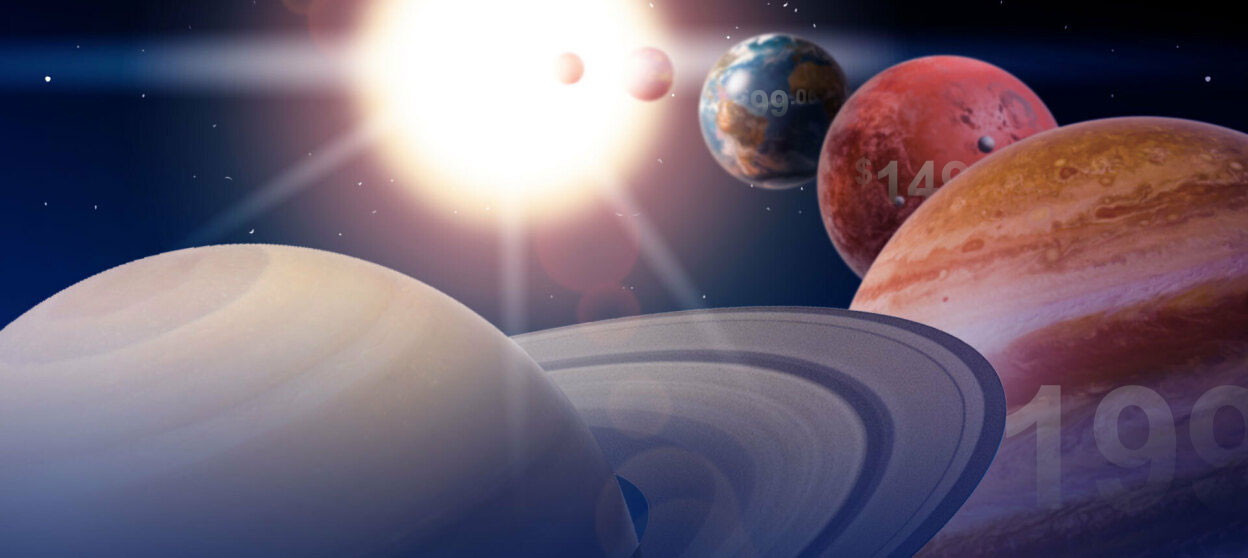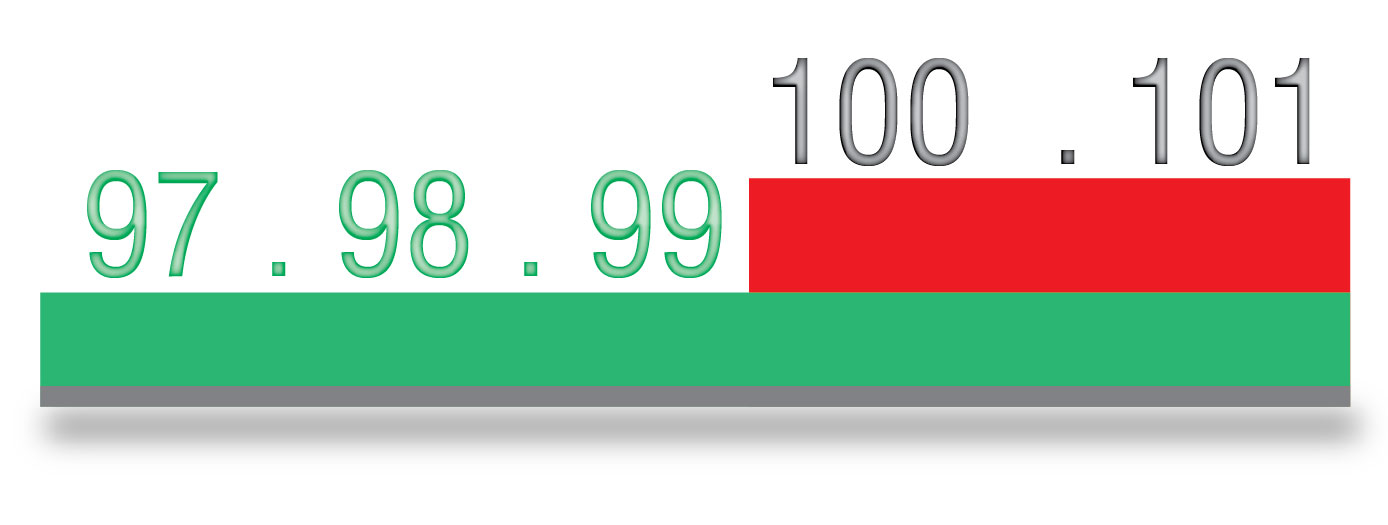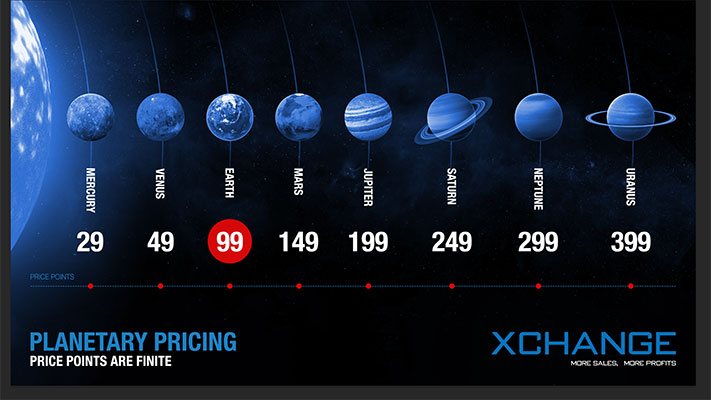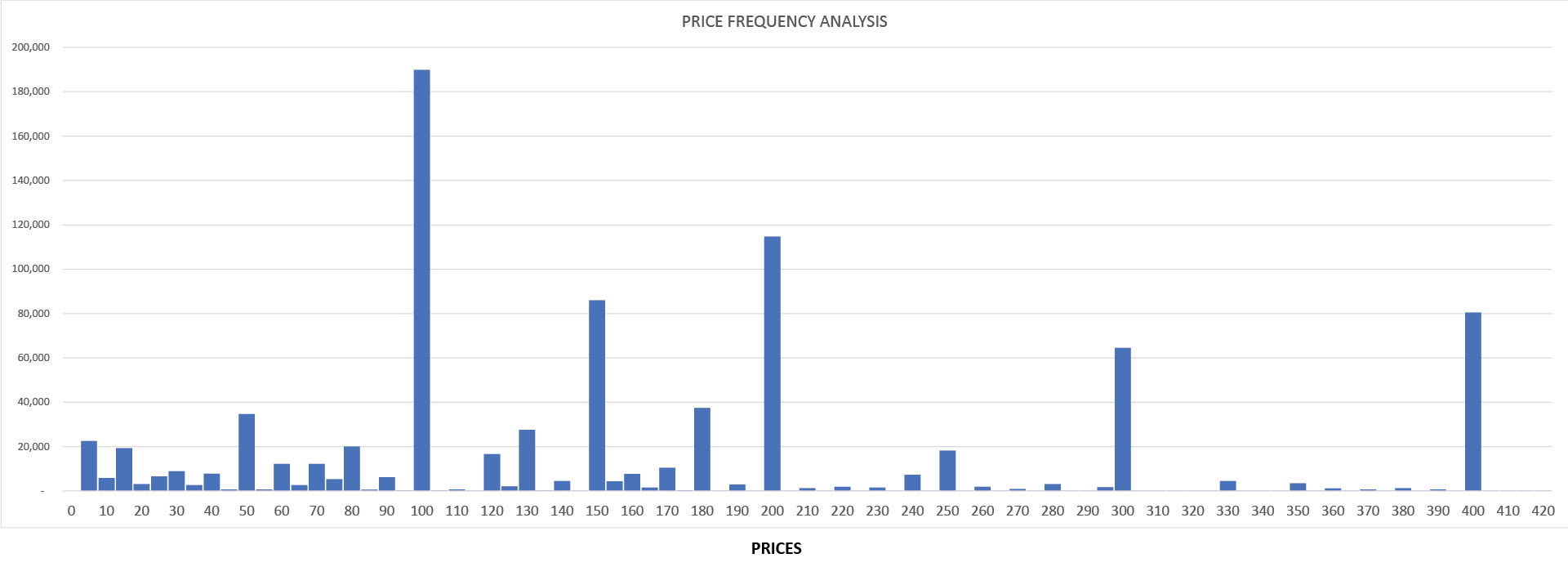Planetary Pricing | All prices aren't created equally
- by Ray Williams
- Marketing
Price Points Exists And They Are Finite
In the world of product development and marketing, it certainly helps to have a beautiful product, however we choose to define "beautiful". Beauty may be in the eye of the beholder, but as John Keats wrote, “a thing of beauty is a joy forever.” That statement certainly holds true in product marketing. In addition to a highly functional, beautiful product, we believe a beautiful price is also important. A beautiful price can help a product while an irregular one can hurt it. To clarify, we are not talking about low price and high price, but instead about the price itself, how it looks, the numbers used, the symmetry of the numbers and the relative popularity of the number used in the price.
Companies make large investments in developing, manufacturing, distributing, and promoting products. In addition to form and function, industrial design often tries to infuse some amount of beauty into products. If two technically identical guitars enter a market, where one is beautiful and the other is dull, it is highly likely that the beautiful guitar will sell more. One final factor often overlooked by product developers is the price itself. Many times, the price is an afterthought. The price selected is important and therefore needs some significant degree of careful deliberation. In addition to having a great, functional, beautiful product, it is important to endow that product with a beautiful price.
All Prices Are Not Created Equally
We completed a study of all the individual prices products sold for and ranked the frequency of each price. Analysis of millions XCHANGE transactions reveals the most popular price use is $99.00. For products sold at discounts, the most popular price used is $49.00. These two related price points account for a whopping 24% of all transactions. The is not unexpected as we are very used to seeing products and services being sold at $99.00. The question is what is it about $99.00 that makes it such a popular price point?
The Three-Digit Barrier
One answer is that it is the last two-digit number before the breaking the psychological three-digit barrier and therefore a clever way to maximize revenue in the two-digit realm. The $99 price acts like a magnet. Our study shows a precipitous drop in the number of sales recorded at adjacent numbers like $97, $98, $100, $101 and $102. For example, there are almost zero transactions for products priced at $100.00 compared to hundreds of thousands for those priced at $99.00.
A Thing Of Beauty
Retailers live in a world where knowing price and availability are paramount. The most frequently asked questions in Retail are “What is the price?” and “Do you have it in stock?” Retailers always want to have answers to these frequently asked questions at their fingertips. If your product has a popular price, like $99, it is easy to remember and therefore more often recommended. In addition to $99, there are a series of Retail price points that are popular and products that sit in these price points benefit because the prices are easy to remember and common.
Imagine several entry-level microphones. Most are priced at $99 but one is at $117 and another $93. The retail channel will tend to recommend the products that are $99.00 more than the two outliers. This is because it is easier to remember and "bond" with a familiar price point like $99 than an unfamiliar and unusual one. This fact benefits the 7 audio microphones priced at $99. If the $117 product was repriced at $149, it will receive more attention, recommendations and perhaps even sales. It may seem counter intuitive, but it is one way to interpret the data. Since $149 is familiar while $117 is not, more sales will occur at $149 despite that fact that it is more expensive. What makes $49.00, $99.00 and $149.00 so special? They are real price points.
Price Points Real Are Hiding In Plain Sight
The most popular price points on XCHANGE are $29, $49, $99, $149, $199, $249, $299, $399 and $499. We choose to look at these price points like planets in our solar system with mercury being the smallest and Pluto the largest. Earth, represented by $99.00, is the best planet and best price point in solar system and Vendors benefit from placing a product on Earth [$99].
After $99, the next best price point for products sold at regular prices is $199. This may come as a surprise that it transacts more than $149, but 34% more transactions occur for products at $199 than $149. It can be argued that 199 is a more beautiful number than 149, however, the fact that it represents a price point 33% more expensive is perplexing.
There is certainly an element of chicken and egg here in that Vendors choose these price points. There is a herd influence to these prices but the question is does it matter why? The fact is that this is what the marketplace looks like. For example, there are more products sold at $199 than $149, which is 33% more expensive. What does that really mean? It could mean a lot of things but what is clear is that the $99 price point is a magnet and integer multiples of it are strong. The data shows that even-number multiples of $99, like $199 and $399, are more popular than fractional multiples like $149 and $249. For example, there are 25% more transactions for products priced at $399 than for those priced at $299. The transaction ranking in descending order is: $99, $199, $149, $399, $299, $249. This data suggests that it may be better to raise the price of a product from $249 to $299 and from $149 to $199.
A Lesson To Learn
This is a specific analysis of a specific market selling music software and many other factors and variables impact the success of a product than just the price number. However, there is a lesson here for product marketing that should not be missed. The price matters. The price of a product is not a random calculation derived from Excel, or a currency conversion ratio, it is instead a fundamental part of product marketing. Product design, functionality, promotions, placement are all important, but so it the exact price that is assigned to the product.
Products On Sale
For products on sale, the data essentially shifts lower by 50% but the distribution looks identical. For products on sale, the price point popularity in descending order is: $49, $29, $99, $199, $149, $249. These prices are popular price points that benefit from retail group think and familiarity.
Nulls & Dead Zones
There are certain prices that register virtually zero transactions counts that are distributed across the price range from $29 to $499. These notches are so unpopular that products placed here are likely at a disadvantage – they are put here to die. In fact, these are price points at all, but instead price graveyards. Price nulls, or prices with very few transactions, appear at $75, $125, $175, $225, $275 – all $50 apart like the real price points. It is as if there is gravity around the price points which dissipates at the midpoint between them.
Another phenomenon is seen in adjacent numbers to price points. As you approach and leave major price points, the adjacent integer prices fall almost to zero. For example, there are virtually no transactions for products priced from $100 to $115 compared to $99. This is repeated in similar dead zones from $90 to $97, $140 to $147 and $190 to $197. This illustrates the innate pull and power of a price point. It eviscerates all adjacent prices.
Exceptions
There are some prices that perform very well because they have a hit product at that point – like $179 and $169, however, when you extract that single anomaly, the sell frequency falls flat. Like our solar system, the planetary price model can accommodate exceptions which we think about as moons and even asteroids. They exist but are not real planets, no one should plan to live on them. In fact, they are not price points at all.
The Bottom Line
The finite number of price points attract products like gravity pulls us down. After evaluating millions of transactions over more than a decade, we can conclusively show that price matters and price points are real. Vendors will do themselves and their product a great service by taking them into full consideration when developing and marketing products.
Author







